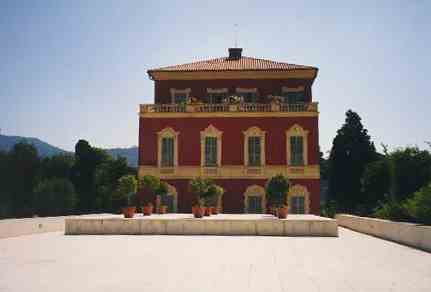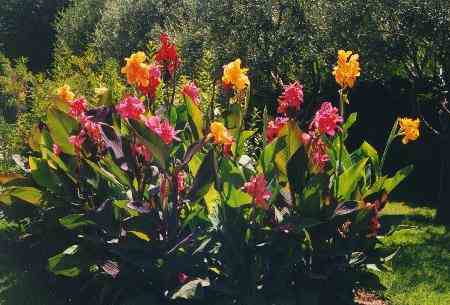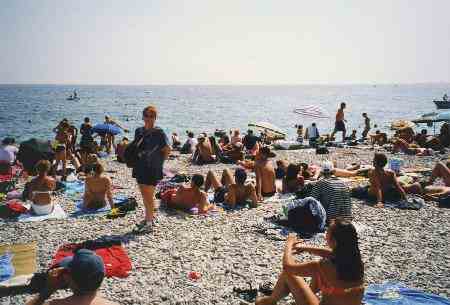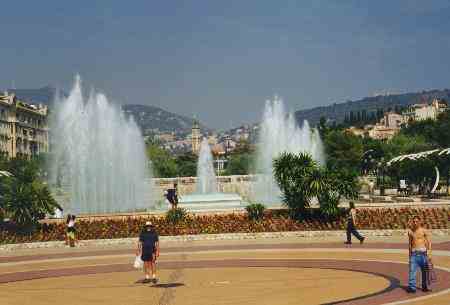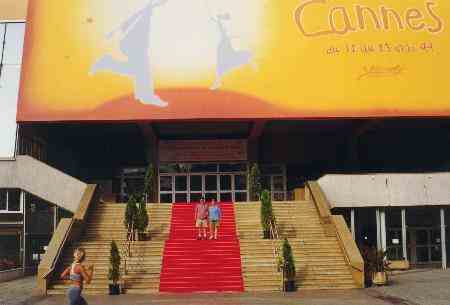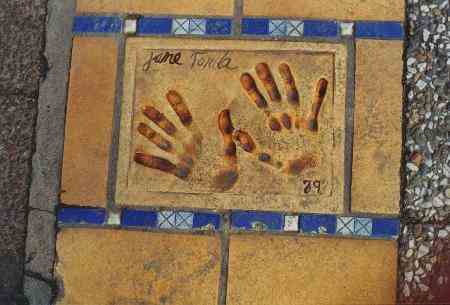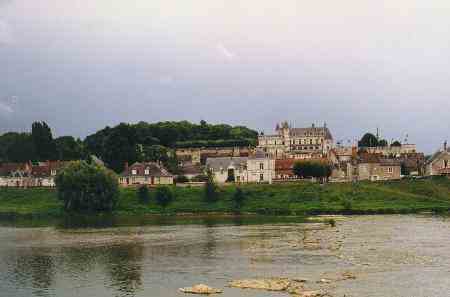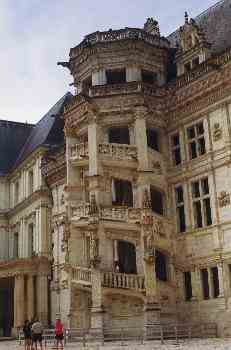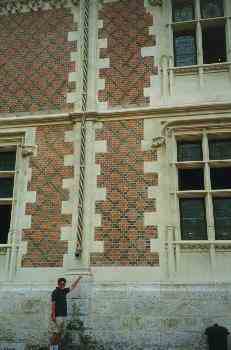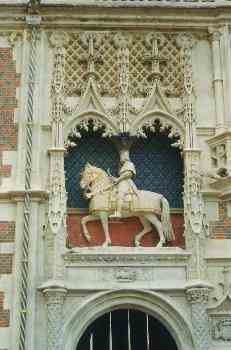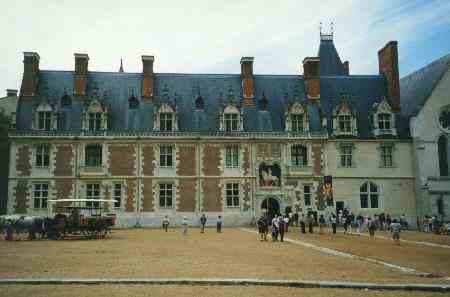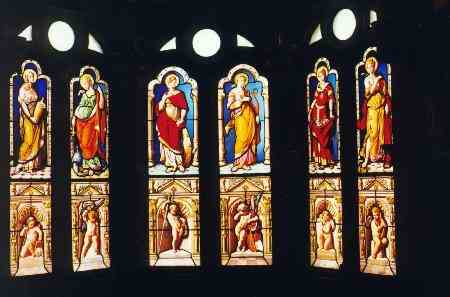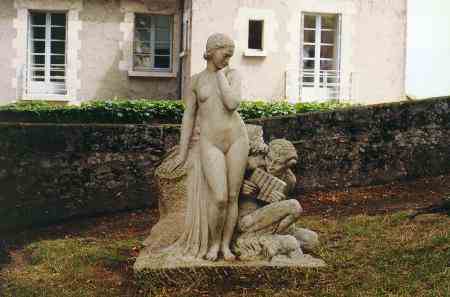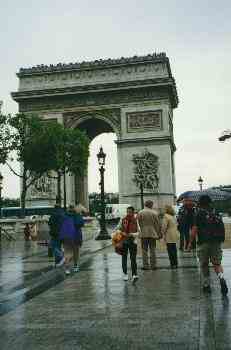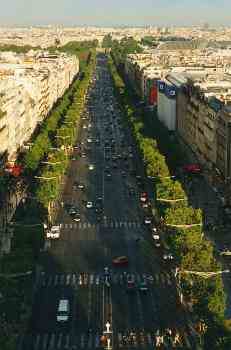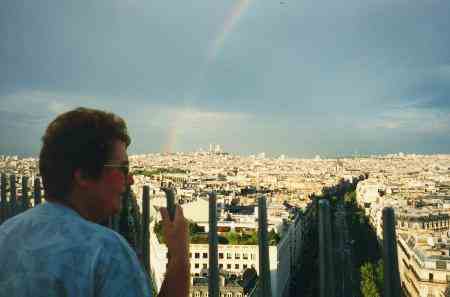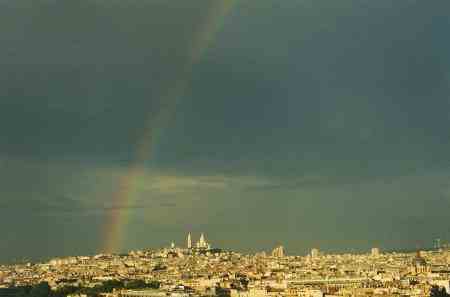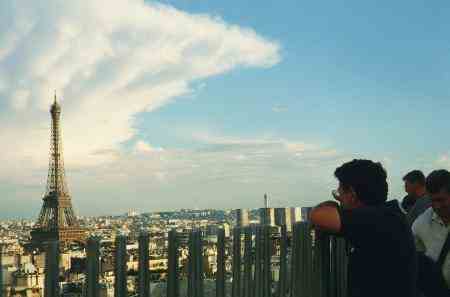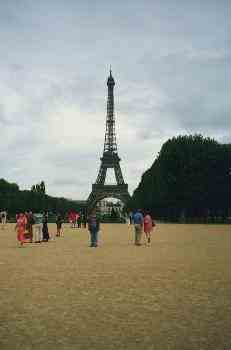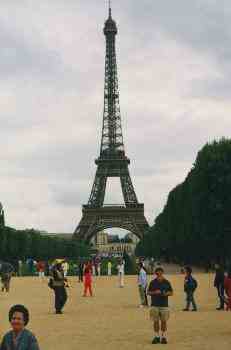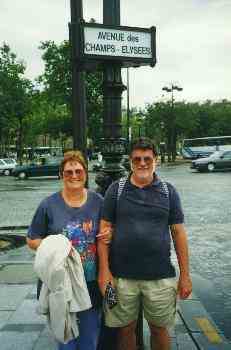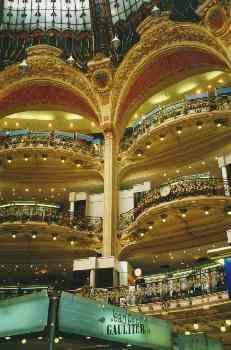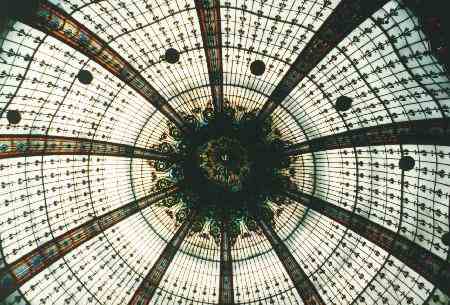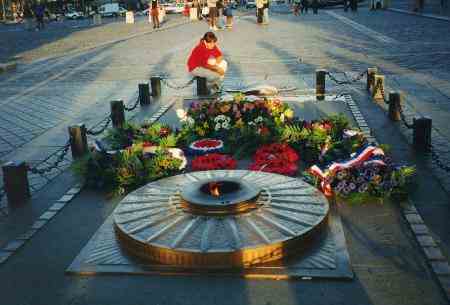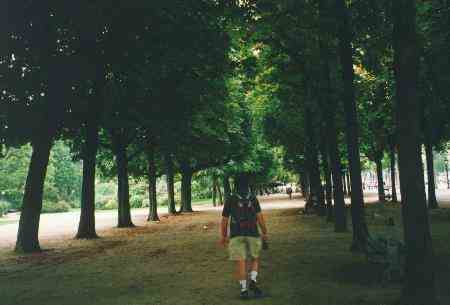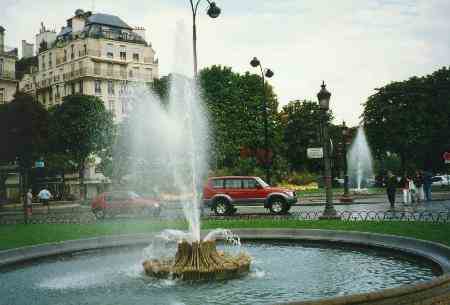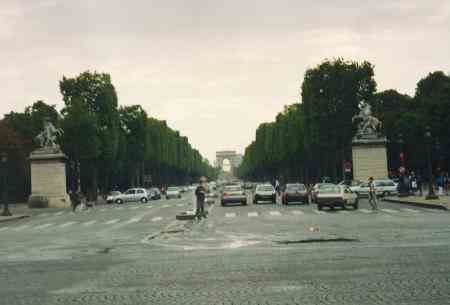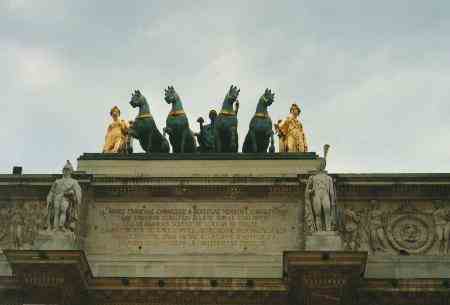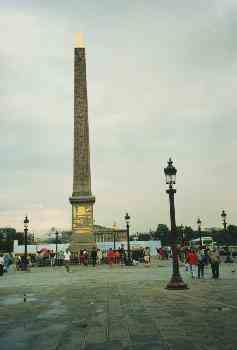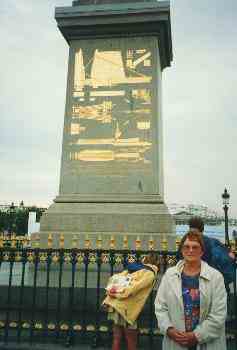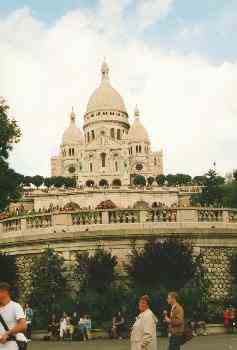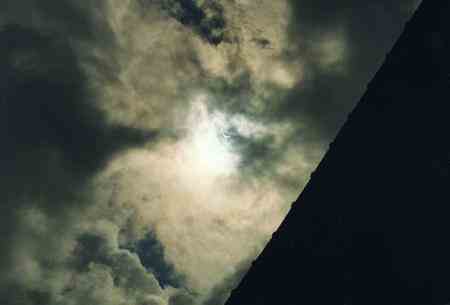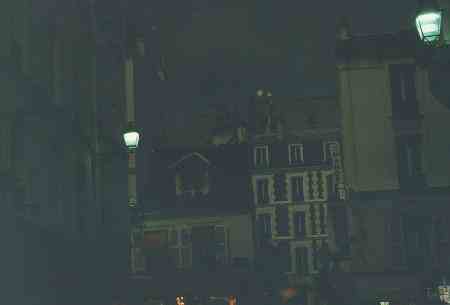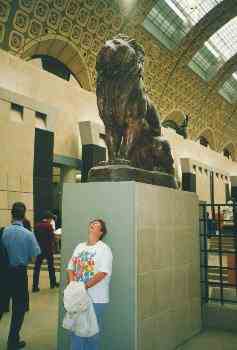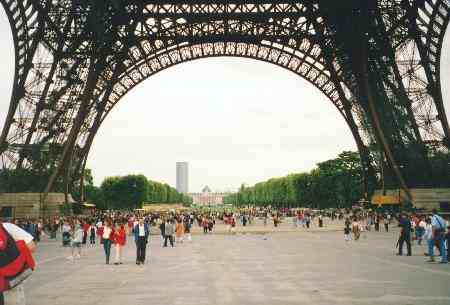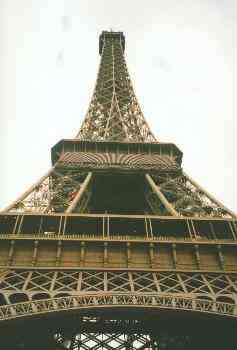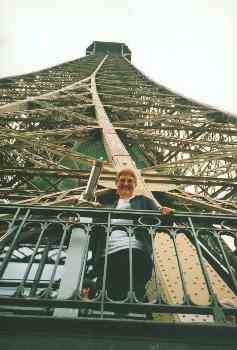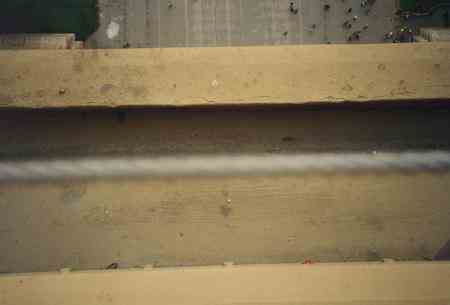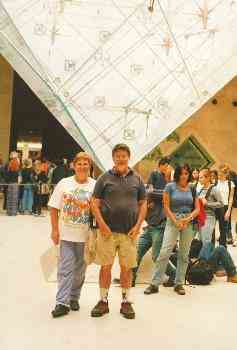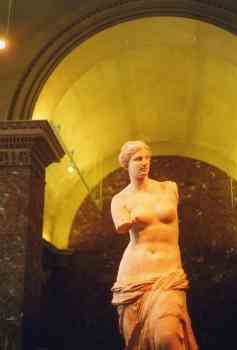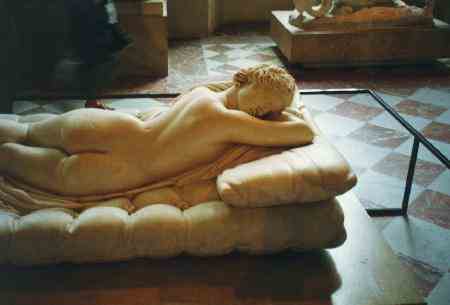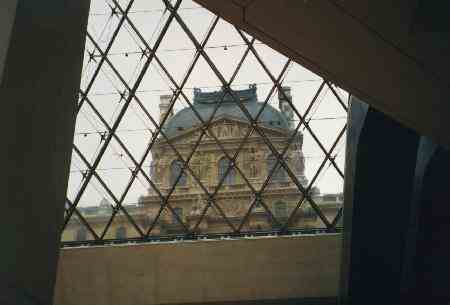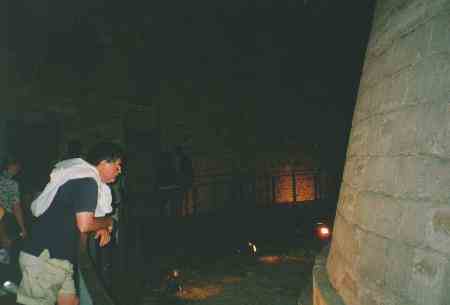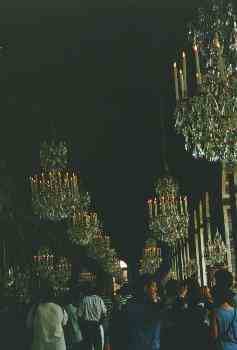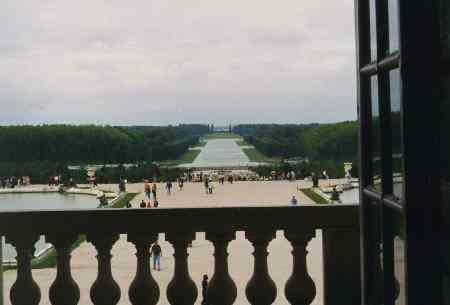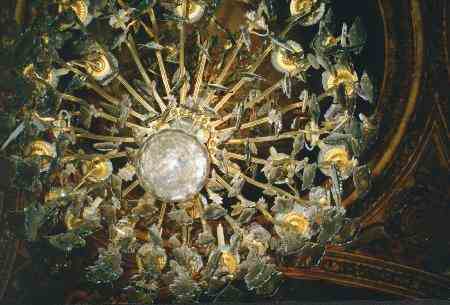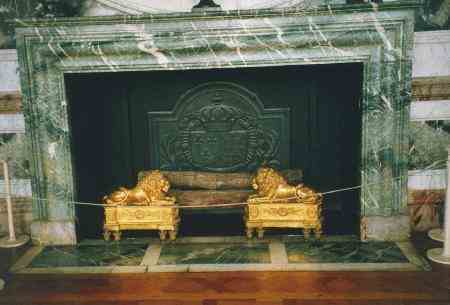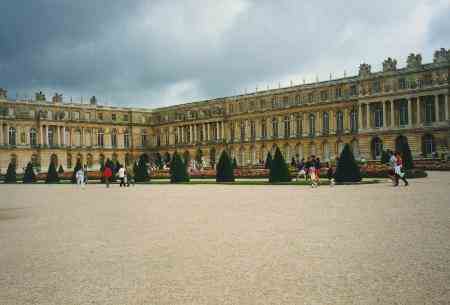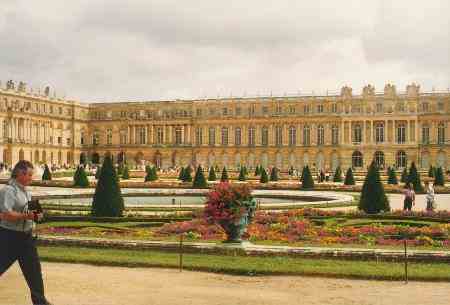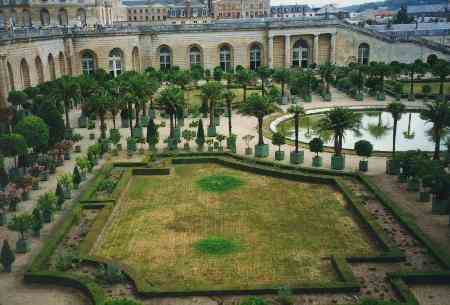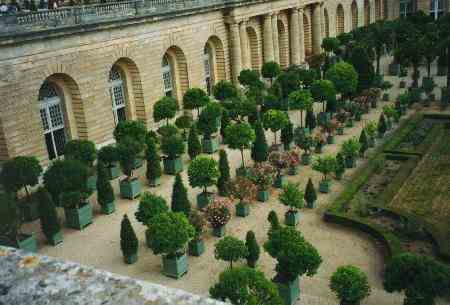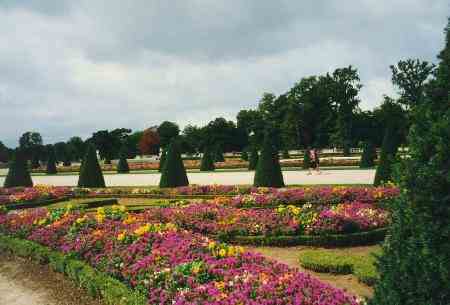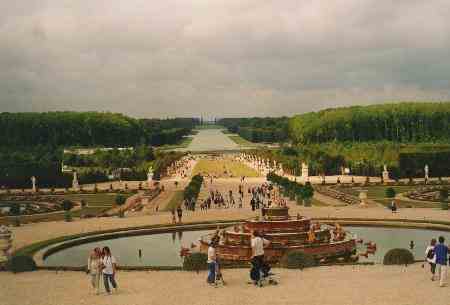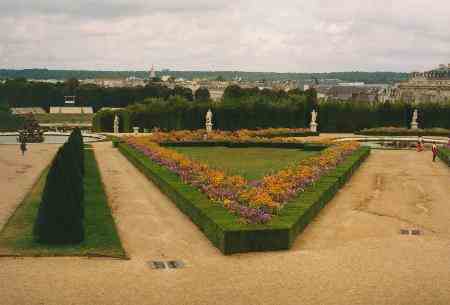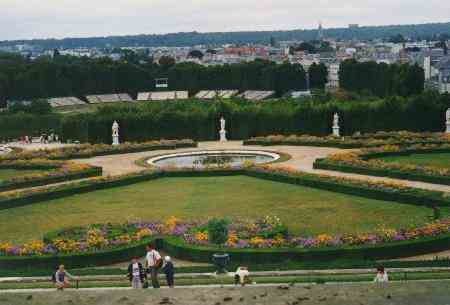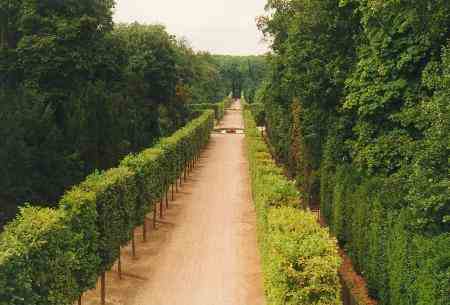In June-July-August-September-October 1999 we went on our first around the world trip.
(99-days - Melbourne - Bangkok - Frankfurt - Moscow - St. Petersburg - Stockholm - Helsinki - Copenhagen - Malaga - London -
Western Europe - UK - Egypt - Jordan - Israel - Greece - New York - Las Vegas - Melbourne).
After a week in London we left Dover on the ferry Kent at the start of our 24-day tour of Western Europe.
We had a smooth, one and a half hour crossing to Calais in France.
Then our bus was quickly off the ferry onto the freeways through Northern France, Belgium and Holland to Amsterdam.
A four country day.
After visiting The Netherlands, Germany, Switzerland, Liechtenstein, Austria and Italy we crossed into the French Riviera to Nice.
Nice
|
|
The Musee Matisse at Nice. |
|
Cana lilies at the Musee Matisse at Nice.
|
|
||||||
|
|
An overdressed bather on the stones at the Mediterranean beach at Nice. We had a swim here. Later in the trip we visited and swam at a much better French resort beach at Biarritz on the Atlantic Ocean. |
||||||
|
Nice fountains at Nice. |
|
|
|
|
A couple of celebrities on the steps user by the film stars to enter the theatre where the Cannes film festival is held.
|
|
|
Jane has been here apparently.
|
|
|
After a week in Spain we crossed the border back into France to Biarritz, an upmarket resort on the Atlantic coast.
Biarritz
An Australian taking a dip in the Atlantic Ocean at the French resort of Biarritz near the Spanish border.
This was a better resort than Nice in that the beach had clean white sand and there was a little bit of surf.
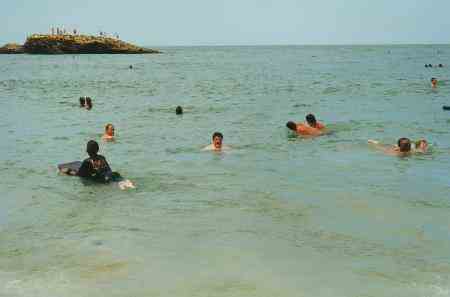
Loire Valley
|
|
Looking across the river to Amboise Chateau. The chateau began to take form in the 11th and 12th centuries. The remains of Leonardo da Vinci who lived in Amboise for the last 3 years of his life are supposedly buried under the chapel's northern trancept. |
|
The spiral staircase at the Chateau de Blois. From the 15th to the 18th centuries the Loire Valley was the playground of French kings, princes, dukes and nobles who used family fortunes and the wealth of the nation to turn it into a vast neighbourhood of lavish chateaux.
|
|
||||||
|
|
A gargoyle at the end of a downpipe at the Chateau de Blois. |
||||||
|
A decorative wall of the Chateau de Blois. |
|
|
|
|
Part of an internal courtyard of the Chateau de Blois.
|
|
|
Stained glass windows of the chapel inside the Chateau de Blois.
|
|
|
|
|
A statue in the gardens of the Chateau de Blois.
|
|
Paris
|
|
The Arc de Triomphe , Paris’ second most famous landmark. This is situated on the world’s largest traffic roundabout and the meeting point of 12 avenues. |
|
The view along the Avenue des Champs - Elysees from the top of the Arc de Triomphe.
|
|
||||||
|
|
On the top of the Arc de Triomphe. The Arc de Triomphe was commissioned in 1806 by Napoleon to commemorate his victories but remained unfinished when he started losing battles and then entire wars. It was finally completed in the 1830s. |
||||||
|
A view of Montmartre from the Arc de Triomphe. |
|
|
|
|
Looking at the Eiffel Tower from top of the Arc de Triomphe.
|
|
|
An Australian tourist in front of The Eiffel Tower.
|
|
|
|
|
Another Australian tourist in front of The Eiffel Tower.
|
|
|
|
About to set out on a walk along the Avenue des Champs – Elysees. We walked from the Arc de Triomphe to the Egyptian obelisk and then through the gardens to The Louvre. Everyone should walk the whole length of this beautifully planned boulevard at least once in their life. |
|
The interior of one of Galeries Lafayette, a famous Parisian department store.
|
|
||||||
|
|
The beautiful glass skylight of Galeries Lafayette. |
||||||
|
The eternal flame at the tomb of the unknown soldier in Paris. |
|
|
|
|
Walking through gardens next to the Avenue des Champs–Elysees.
|
|
|
One of the fountains with a lalique crystal base near the Avenue des Champs–Elysees.
|
|
|
|
|
Looking from the Place de la Concorde along the Avenue des Champs–E lysees to the Arc de Triomphe. Louis XVI was guillotined here in 1793 as were another 1343 people over the next two years including his wife, Marie-Antionette.
|
|
|
|
The four bronze horse statue on top of the Arc de Victory in the Jardin des Tuileries near The Louvre. This statue is a copy. The original statue came from St. Marks in conquered Venice. The Venetians had taken them from conquered Constantinople, which had acquired them in Rome, which, in turn, had looted them from, it is believed, the Temple of the Sun in Corinth. After Napoleons defeat, France was forced to return them to Venice. |
|
The 3300 year old Egyptian obelisk in the middle of the Place de la Concorde was given to France in 1829 by the ruler of Egypt, Muhammad Ali.
|
|
||||||
|
|
The base of the Egyptian obelisk which has diagrams showing how it was raised in this square.
|
||||||
|
|
The Basilique du Sacre Coeur at Monmartre, Paris. During the 19th century and especially after 1871, Monmartre’s Bohemian lifestyle attracted artists and writers. |
|
11th August 1999, the day of an eclipse of the sun in parts of Europe. It was only a partial eclipse here on Monmartre.
|
|
||||||
|
|
An eerie darkness during the partial eclipse at Monmartre at about 1pm in the afternoon. The birds were confused, roosting on the ledges of buildings and hesitant to move when it became light again. |
||||||
|
A Paris lion inside the Musee d’Orsay, a former railway station that is now a spectacular art gallery. The best collection of Impressionist and Postimpressionist art in the world. |
|
|
|
|
The plaza beneath Eiffel Tower.
|
|
|
The Eiffel Tower. Over 176 million people have visited it. The large passenger lifts in the east and north towers can carry 110 passengers each.
|
|
||
|
|
An Australian tourist on the second level of the Eiffel tower. |
||
|
|
Looking down from the second level of the Eiffel tower.
|
||
The Louvre
|
|
The controversial glass pyramid that is now the Louvre’s main entrance. Designed by the American architect I M Pei and commissioned in 1990 the design generated bitter opposition. |
|
In the entrance foyer to The Louvre beneath the glass pyramid. The glass pyramid is a brilliant success as the area beneath it is very spacious and extremely well lit.
|
|
||||||
|
|
Leonardo da Vinci’s Mona Lisa in The Louvre. It was painted about 1514 and is not a very large painting (about 70cm X 100cm). |
||||||
|
Venus de Milo in The Louvre. The famous armless statue Aphrodite, the Greek goddess of love, fertility and beauty. It was carved in marble about 150BC and was discovered in 1820 on the island of Melos. |
|
|
|
|
|
|
|
Looking out from inside The Louvre through one of the smaller pyramids to another wing of The Louvre.
|
|
|
|
|
The present Louvre has been built on the foundations of previous chateaux on this site. These excavations in the basement of The Louvre have uncovered the remains of a tower in an old wall. The Louvre was the French royal palace until the new palace of Versailles was built in the mid-17th century.
|
|
Versailles
|
|
Chandeliers in the Galerie des Glaces (Hall of Mirrors) at the Palace of Versailles. In 1919 the Treaty of Versailles was signed in this room officially ending WWI. |
|
The view through the windows of the Hall of Mirrors to some of the gardens of Versailles.
|
|
||||||
|
|
A chandelier in one of the state rooms at the Palace of Versailles. The palace was sparsely furnished and decorated compared to the Russian palaces that we saw. Much of the furnishings were sold off at the time of the French Revolution. |
||||||
|
A massive fireplace at the Palace of Versailles guarded by 2 gilded lions. |
|
|
|
|
One of the courtyards at the Palace of Versailles. The enormous palace was built in the mid-17th century during the reign of Louis XIV (the Sun King).
|
|
|
Some of the formal gardens at the Palace of Versailles. Among the advantages of Versailles was its distance from the political intrigues of Paris.
|
|
|
|
|
More of the formal gardens. Out here at Versailles it was much easier for the king to contain and keep an eye on his scheming nobles. The plan worked brilliantly, all the more so because court life turned the nobles into sycophantic courtiers who expended most of their energy vying for royal favour.
|
|
|
|
In the gardens overlooking the Orangerie; citrus trees in pots that are taken inside for protection during the winter. |
|
The gardens at the Palace of Versailles.
|
|
||||||
|
|
The gardens at the Palace of Versailles. |
||||||
|
The gardens at the Palace of Versailles. |
|
|
|
|
The gardens at the Palace of Versailles.
|
|
|
|
The gardens at the Palace of Versailles.
|
|
And so our 8850 km Western European tour came to an end.
From Paris we were bussed to Calais. We crossed the English channel on a ferry to Dover.
Then we were bussed to London.
